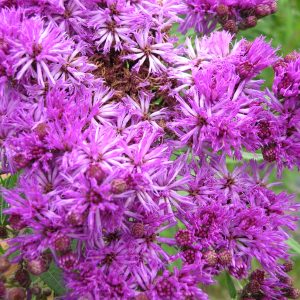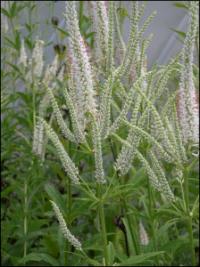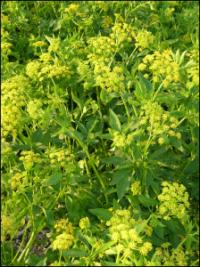Wisconsin Native
Showing 105–107 of 107 results
-
Vernonia fasciculata Prairie Ironweed Z 3-7
Dense clusters of fluffy petaled, true royal purple flowers atop unbranched stems, July-September
Dense clusters of fluffy petaled, true royal purple flowers atop unbranched stems, July-September
Size: 3-4’ x 2-3’
Care: sun to part shade in moist to moist well drained soil
Native: so central Canada to central & eastern US, Wisconsin native
Wildlife Value: Butterfly attractor – Fiery skipper. Host for Common buckeye butterfly. Deer & rabbit resistant.Lakota Sioux: “The leaves are formed into a sort of “plate” that keeps foreign matter from getting on meat. An infusion of the root is used to regulate menstrual periods.”
Collected by French planthunter André Michaux (1746-1802) who spent 11 years exploring America for plants. Vernonia named to honor Wm. Vernon (1666-1711) English botanist who collected plants in late 1600’s. -
Veronicastrum virginianum, Culver’s root Z 4-9
Tall, graceful ivory spires made of multitudes of small tubes crowd along the stem, arranged like a candelabra. This flowers from early to mid-summer.
Tall, graceful ivory spires made of multitudes of small tubes crowd along the stem, arranged like a candelabra. This flowers from early to mid-summer.
Size: 4' x 18"
Care: full sun to part shade in moist soil
Native: From Canada to Texas, Wisconsin native
Wildlife Value: Numerous bee species, including the Rusty patched Bumble Bee, wasps, and butterflies collect pollen and drink the nectar.Used by American Indians as a laxative and to induce vomiting and clean blood. Cherokee cured typhus and inactive livers with Culver’s root. Seneca Indians used the root in their ceremonies. Sioux also used this to stimulate the liver. They also burned the root for the smoke to purify those who had contact with a dead family member. 1st collected by Rev. John Banister (1649-1692) who moved to colonial Virginia in 1678. A gunman mistakenly shot and killed him while he collected plants. Colonial Puritan Cotton Mather unsuccessfully attempted to use this plant to cure his daughter’s tuberculosis in 1716. Colonial nurseryman John Bartram (1699-177) recorded medicinal uses saying, “One Handful of the Roots of this Plant, boiled in a Pint of Milk, and drank, is used by the back Inhabitants for a powerful Vomit.” Pressed specimen in Emily Dickinson’s herbarium.
-
Zizia aurea Golden alexanders Z 4-9
In spring, golden umbels
Tiny chartreuse-golden flowers, grouped in umbels, spring. Good cut flower.
Size: 30"x 24"
Care: full sun in moist to moist well-drained soil
Native: from New Brunswick south to Florida - west to Texas, Wisconsin native
Wildlife Value: Primary host for the Missouri Woodland and Black swallowtail butterfly caterpillars. Supports over 70 bee species.Meskwaki used the root to reduce fevers and the flower stalks to ease headaches. Collected by late 1700’s. Good cut flower.



